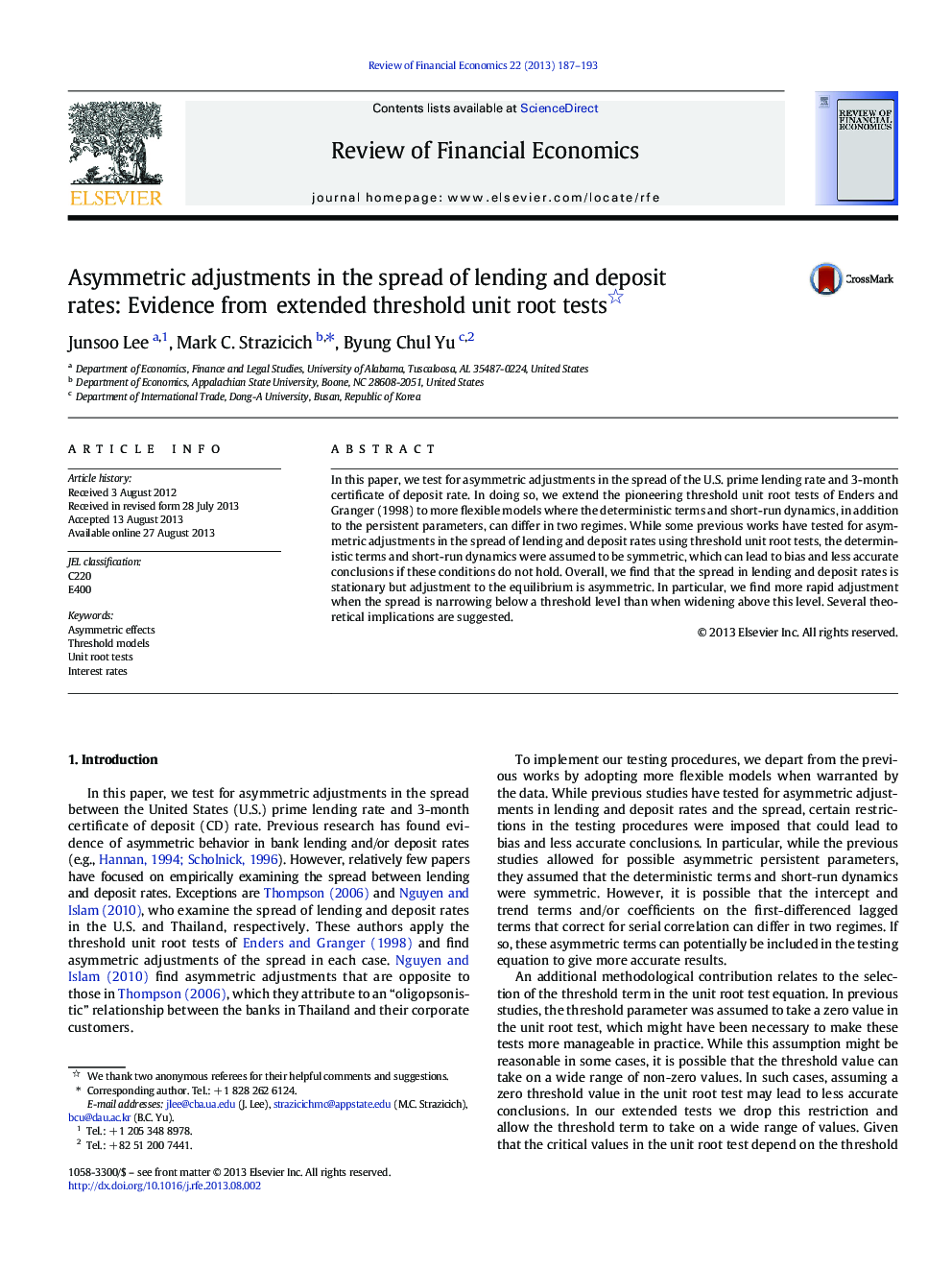| Article ID | Journal | Published Year | Pages | File Type |
|---|---|---|---|---|
| 986870 | Review of Financial Economics | 2013 | 7 Pages |
In this paper, we test for asymmetric adjustments in the spread of the U.S. prime lending rate and 3-month certificate of deposit rate. In doing so, we extend the pioneering threshold unit root tests of Enders and Granger (1998) to more flexible models where the deterministic terms and short-run dynamics, in addition to the persistent parameters, can differ in two regimes. While some previous works have tested for asymmetric adjustments in the spread of lending and deposit rates using threshold unit root tests, the deterministic terms and short-run dynamics were assumed to be symmetric, which can lead to bias and less accurate conclusions if these conditions do not hold. Overall, we find that the spread in lending and deposit rates is stationary but adjustment to the equilibrium is asymmetric. In particular, we find more rapid adjustment when the spread is narrowing below a threshold level than when widening above this level. Several theoretical implications are suggested.
